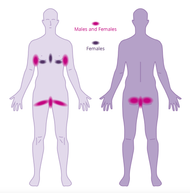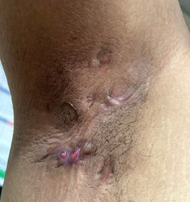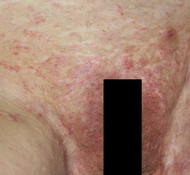What is Hidradenitis Suppurativa?
Hidradenitis suppurativa (HS) is a chronic inflammatory disease characterized by recurrent episodes of painful deep-seated nodules, abscesses, or tunnels.
Hidradenitis suppurativa (HS) is a chronic inflammatory disease characterized by recurrent episodes of painful deep-seated nodules, abscesses, or tunnels. These elements must appear in the axillae, under the breasts or in the anogenital region at least twice every six months for the diagnosis to be made. Furthermore, secondary positive diagnostic features are a positive family history of HS, a negative bacterial swab, or the presence of normal skin microbiota. The differential diagnoses include staphylococcal infections, cutaneous Crohn’s disease, neoplasms, lymphogranuloma venereum, and scrofuloderma.
In contrast to most skin diseases, it causes significant scarring, leading to permanent damage to the skin. It is a disfiguring, noncommunicable disease that is associated with pain, embarrassment, increased suicide risk, and a significant decrease in quality of life. HS typically begins at the end of puberty and is rare for those over the age of 60. The previously reported prevalence ranges from <0.1% to 4.1%. HS is also associated with multiple comorbidities. HS is a global disease with severe consequences, and it burdens patients with disability, impairment, and handicap. The precise etiology of HS remains unknown but includes genetic predisposition, immune dysregulation, microbiome imbalance, and possibly mechanical stress.
The further development of draining tunnels and the subsequent scarring can be profoundly debilitating, leading to a significant reduction in the patient’s quality of life. The patients endure a prolonged delay from disease onset to diagnosis, poor response to treatment, and severe comorbidity load. Unfortunately, neither a clear cause nor cure is readily available. Despite its grave impact on the patients, HS has notoriously been misdiagnosed and overlooked. However, awareness is on the rise, highlighting the critical need for global recognition and shared knowledge among experts. While it is estimated that 0.40% of the global population suffers, this figure might be inaccurate due to a presumed considerable number of undiagnosed patients silently living with the condition and to missing data from large parts of the world.
Distribution of locations commonly affected in HS


Figure: Auxiliary Lesions

Figure: Femoral Lesions (Groin)

